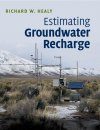Handbook / Manual
By: Richard W Healy(Author), Bridget R Scanlon(Contributor)
245 pages, 104 b/w illustrations, 16 tables
![Estimating Groundwater Recharge Estimating Groundwater Recharge]()
Click to have a closer look
About this book
Contents
Customer reviews
Biography
Related titles
About this book
Understanding groundwater recharge is essential for successful management of water resources and modeling fluid and contaminant transport within the subsurface. Estimating Groundwater Recharge provides a critical evaluation of the theory and assumptions that underlie methods for estimating rates of groundwater recharge. Detailed explanations of the methods are provided – allowing readers to apply many of the techniques themselves without needing to consult additional references. Numerous practical examples highlight benefits and limitations of each method.
Approximately 900 references allow advanced practitioners to pursue additional information on any method. For the first time, theoretical and practical considerations for selecting and applying methods for estimating groundwater recharge are covered in a single volume with uniform presentation. Hydrogeologists, water-resource specialists, civil and agricultural engineers, earth and environmental scientists and agronomists will benefit from this informative and practical book, which is also a useful adjunct text for advanced courses in groundwater or hydrogeology.
Contents
Preface
1. Groundwater recharge
2. Water-budget methods
3. Modeling methods
4. Methods based on surface-water data
5. Physical methods - unsaturated zone
6. Physical methods - saturated zone
7. Chemical tracer methods
8. Heat tracer methods
9. Linking estimation methods to conceptual models of groundwater recharge
References
Index
Customer Reviews
Biography
For more than 30 years, Rick Healy has been conducting research for the U.S. Geological Survey on groundwater recharge, water budgets of natural and human-impacted hydrologic systems, and fluid and contaminant transport through soils. He has taught numerous short courses on unsaturated zone flow and transport, and groundwater flow modelling. He first presented a short course on methods for estimating recharge in 1994, and over the intervening 15 years the course has been presented to several hundred professionals and students. The material in that course has been expanded and refined over the years and forms the basis of Estimating Groundwater Recharge. Rick has authored more than 60 scientific publications and is developer of the VS2DI suite of models for simulating water, solute, and heat transport through variably saturated porous media. He is a member of the Soil Science Society of America, the American Geophysical Union, and the Geological Society of America.
Handbook / Manual
By: Richard W Healy(Author), Bridget R Scanlon(Contributor)
245 pages, 104 b/w illustrations, 16 tables
"[...] the structure of the book is well thought over, and each section can be perceived as a comprehensive elaboration preceded by an introduction and followed by a discussion [...] well written [...] students will find in this book important and interesting information that they can apply in their hydrological projects [...] I find the book a valuable source of knowledge, supported by the author's scientific experience."
– Geologos
"[...] provides such a treasure trove of insight and information, presented in such an amiable fashion, that it deserves a place of honor on the bookshelves of groundwater professionals everywhere [...] In addition to theory, facts, examples and references, the book provides valuable insight [...] this is an extremely useful new addition to the hydrogeologists' library [...] will prove particularly useful to modelers looking for insight into their their uppermost boundary conditions (both recharge and discharge) [...] it will also inspire some of us to go out and try one or more of the many methods that are so well documented in the book and will ultimately result in significant advances in our science."
– Ground Water
"Clearly written, the book also serves as a reference work. [...] The literature is covered extensively, with emerging techniques presented in historical context. [...] Many hydrologists will want to keep a copy close at hand as a reference text."
– Eos
"[...] an excellent addition to the growing knowledge base of groundwater science and technology. [...] By placing an emphasis on method, this book provides clear concepts of the recharge process and associated methods that stem from more than 800 peer-reviewed references. [...] Healy's book offers a comprehensive yet focussed treatment in both theoretical and practical aspects through a wealth of cited references. [...] the book comprehensively documents some 40 methods that can be applied for estimating groundwater recharge in a range of hydrological scenarios. Perhaps for the first time, both theoretical and practical aspects are considered within the conceptual framework. It makes the book an excellent reference for both students and practising hydrogeologists to consult in their endeavour to better understand recharge estimation."
– Hydrogeology Journal



































